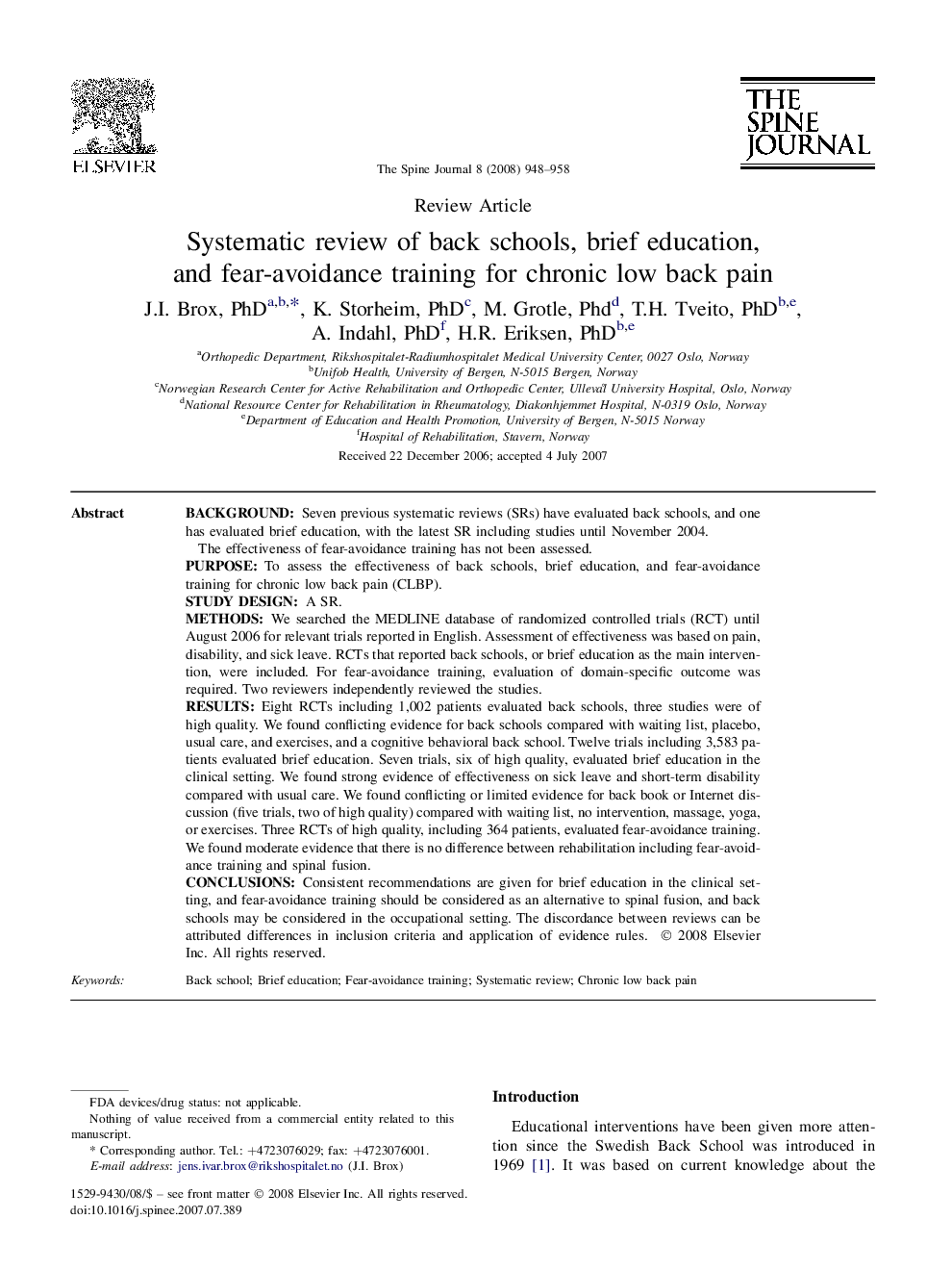| Article ID | Journal | Published Year | Pages | File Type |
|---|---|---|---|---|
| 4099821 | The Spine Journal | 2008 | 11 Pages |
BackgroundSeven previous systematic reviews (SRs) have evaluated back schools, and one has evaluated brief education, with the latest SR including studies until November 2004.The effectiveness of fear-avoidance training has not been assessed.PurposeTo assess the effectiveness of back schools, brief education, and fear-avoidance training for chronic low back pain (CLBP).Study designA SR.MethodsWe searched the MEDLINE database of randomized controlled trials (RCT) until August 2006 for relevant trials reported in English. Assessment of effectiveness was based on pain, disability, and sick leave. RCTs that reported back schools, or brief education as the main intervention, were included. For fear-avoidance training, evaluation of domain-specific outcome was required. Two reviewers independently reviewed the studies.ResultsEight RCTs including 1,002 patients evaluated back schools, three studies were of high quality. We found conflicting evidence for back schools compared with waiting list, placebo, usual care, and exercises, and a cognitive behavioral back school. Twelve trials including 3,583 patients evaluated brief education. Seven trials, six of high quality, evaluated brief education in the clinical setting. We found strong evidence of effectiveness on sick leave and short-term disability compared with usual care. We found conflicting or limited evidence for back book or Internet discussion (five trials, two of high quality) compared with waiting list, no intervention, massage, yoga, or exercises. Three RCTs of high quality, including 364 patients, evaluated fear-avoidance training. We found moderate evidence that there is no difference between rehabilitation including fear-avoidance training and spinal fusion.ConclusionsConsistent recommendations are given for brief education in the clinical setting, and fear-avoidance training should be considered as an alternative to spinal fusion, and back schools may be considered in the occupational setting. The discordance between reviews can be attributed differences in inclusion criteria and application of evidence rules.
